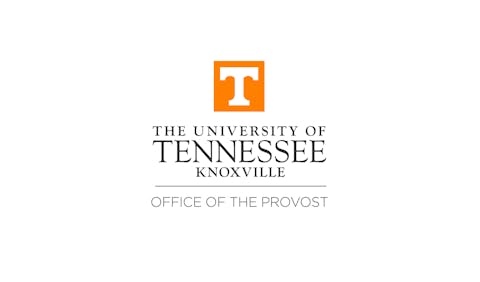 Dr. Adriana Villavicencio
Dr. Adriana Villavicencio
“I wanted my daughter to see other children who look like her,” Tran explains. “But I was also looking at the academic performance. Schools with more Asian students often have higher test scores and more rigorous programs.” Tran’s perspective reflects the findings of a groundbreaking study recently published in the Harvard Educational Review, which reveals how the pervasive “model minority” stereotype influences Asian American parents’ school selection process. The research, led by New York University’s Dr. Adriana Villavicencio and doctoral candidates Tiffany Wu and Verenisse Ponce-Soria from the University of California, Irvine, explores the complex intersection of racial attitudes, academic expectations, and school choice.
Parental priorities
The researchers interviewed 34 Asian American parents navigating a large urban school district’s ranking system as their children prepared to enter kindergarten, sixth grade, or ninth grade. These participants were drawn from a broader sample of 1,865 parents applying for schools in the 2022-2023 academic year. The interviews were conducted in English or Mandarin, based on the parents’ preferences, and covered questions related to their personal backgrounds, familiarity with the district’s enrollment policies, school selection, and their decision-making processes in ranking preferred schools.
What they discovered was striking: approximately 80 percent of the Asian American parents identified student demographics as one of their top priorities when selecting schools. More specifically, 29 percent preferred schools where Asian students comprised half or more of the student body, while 35 percent actively avoided schools with significant Black or Latine student populations (25 percent or higher). Twelve percent of parents expressed both preferences. “Many parents we interviewed expressed concerns about their children’s safety and academic development,” says co-author Tiffany Wu. “They often associated these concerns with racial composition of schools, reflecting internalized stereotypes about which racial groups value education more highly.”
The study argues that these preferences reflect the enduring impact of the model minority myth—the stereotype that portrays Asian Americans as universally successful due to inherent cultural values emphasizing education, hard work, and compliance with authority. This stereotype, which emerged in the United States during the mid-20th century, has been criticized by scholars for creating a false racial hierarchy and obscuring the significant diversity within Asian American communities. The enduring impact of the ‘model minority’ myth Despite these criticisms, the model minority myth continues to shape educational experiences and choices. For many of the parents interviewed, these stereotypes manifested in their school selection process. One participant, a Chinese American father of a sixth grader who requested anonymity, explained his reasoning: “I look at the percentage of Asian students because, in my experience, those schools have more advanced classes and higher standards. Parents push their kids harder.”
The influence of the model minority myth extended beyond academic considerations. Several parents expressed concerns about perceived cultural differences in discipline approaches and behavioral expectations. One mother described seeking out schools with “similar cultural values” where teachers would “maintain order” and “push students to achieve,” language that echoes common elements of the model minority stereotype.
The study revealed another intriguing finding: while more than half of the parents indicated that diversity was important in schools, their understanding of “diversity” varied significantly based on socioeconomic status. High-income parents (those earning more than $150,000 annually) typically described diversity as environments with students from varied racial and socioeconomic backgrounds. However, low- and middle-income Asian American parents often characterized diversity differently— as environments that reflected their own racial backgrounds.
This distinction highlights the complex ways in which race, class, and perceptions of educational quality intersect in school choice decisions.
“For many working- class Asian American families, having their children in schools with substantial numbers of other Asian students provides a sense of cultural safety and understanding,” says Wu. “These parents often expressed concerns about racial discrimination and cultural misunderstandings their children might face in predominantly white or other non- Asian environments.”
The researchers noted that these concerns are not unfounded. Historical and contemporary anti-Asian sentiment has created complex educational dynamics for Asian American students. Many parents in the study described instances where their children had faced discrimination schools with larger Asian populations.
Lily Wong, a Korean American mother whose son is entering high school next year, recounted her family’s experience in an interview with Diverse. “My older son was one of very few Asian kids at his middle school. He was constantly teased about his lunch, his accent, his appearance. We don’t want our younger son to go through that, so we’re very conscious about the school environment this time,” says Wong.
Several parents also expressed concern about perceived disciplinary disparities in schools with diverse student populations. These concerns often stemmed from media representations and community discussions rather than personal experiences, demonstrating how broader racial narratives can influence educational decision-making even in the absence of direct exposure.
For education policymakers, the study raises important questions about how to achieve equitable integration while addressing the legitimate concerns of diverse parent communities. The researchers found that many parents expressed support for integration in principle but prioritized other factors—such as academic rigor and cultural comfort— in practice. “The gap between expressed values and actual choices presents both challenges and opportunities for policymakers,” says Wu. “Many parents want diverse, integrated schools, but they also want environments where their children will thrive academically and socially. Building school systems that deliver on both promises is essential for meaningful integration.”
Challenges remain
The findings present significant challenges for education policymakers working to create more integrated and equitable school systems. “Research shows that school integration can decrease academic gaps between racial groups, reduce prejudice, and increase social cohesion,” said Villavicencio, the study’s senior author and an assistant professor of educational leadership and policy studies at NYU Steinhardt. “However, these policies often fail when they don’t account for parent buy-in. By highlighting the voices and perspectives of parents who are typically underrepresented in education research, this study seeks to understand the factors that support or undermine efforts to create more equitable school systems.”
The researchers argue that addressing these challenges requires nuanced approaches that acknowledge the legitimate concerns of Asian American parents while working to dismantle harmful stereotypes that divide communities of color.
“In light of the complex histories and dynamics between different racial groups, including the model minority myth which can be used as a racial wedge, we argue that school districts should create opportunities for cross-racial dialogues wherein communities can share their lived experiences and hopes for their children, potentially surfacing shared visions for their school system,” says Villavicencio.
The study suggests that schools should work to ensure academic excellence across all student demographics, directly addressing a key concern that drives segregated choices. Additionally, creating safe, inclusive environments where students from all backgrounds feel respected and valued could help ease parental anxieties about discrimination and cultural misunderstandings.
For Asian American parents like Mai Tran, such initiatives could help address the tension between wanting cultural connection for their children and wanting them to experience truly diverse learning environments.
“I want my daughter to be proud of her heritage, but I also want her to learn alongside children from many backgrounds,” says Tran. “It shouldn’t have to be an either-or choice between academic excellence and diversity, or between cultural connection and integration.”
Experts say that the study, funded by the William T. Grant Foundation, offers valuable insights for educational policymakers, school administrators, and communities working to create more equitable and inclusive educational systems in increasingly diverse American cities. By understanding the complex motivations behind school choice decisions, educators and policymakers may be better equipped to build systems that honor diverse perspectives while promoting integration and equity for all students.


















